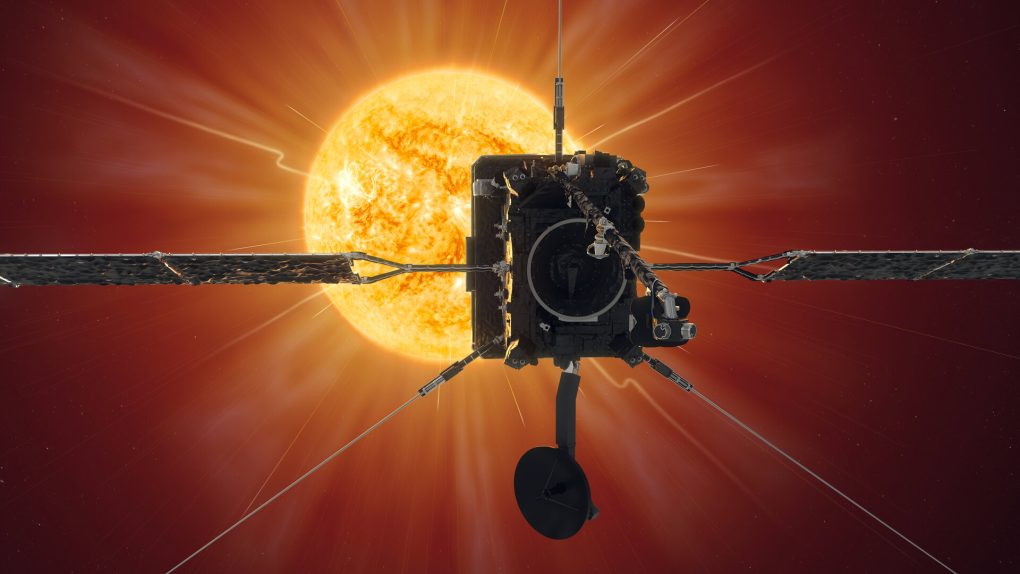- NASA’s Solar Orbiter, a mission conducted in partnership with the European Space Agency, made its first close approach observations of the star.
- The spacecraft is roughly halfway between the Earth and the Sun, and it will send back photos of the star’s surface that could answer some burning questions.
- NASA’s Parker Solar Probe is much closer to the Sun but doesn’t have imaging capabilities.
Exploring and observing the various other planets in our solar system is neat and all, but none of it (or us) would be here without the Sun. Despite that, we actually know fairly little about our nearest star, and in recent years astronomers have been eager to change that. A joint mission between NASA and the European Space Agency sent the Solar Orbiter on a trip to take some up-close-and-personal photos of the star, and it just made its very first close pass.
As the European Space Agency explains in a new blog post, the flyby took place at a distance of just over 47 million miles from the star’s surface. That’s roughly halfway between the Earth and the Sun, but it’s close enough that it allows the spacecraft to capture imagines in a higher resolution than has ever been possible before.
Understanding how the Sun ticks is a complicated task. Observing the Sun from our vantage point on Earth allows us to learn certain things about it, but it still holds many mysteries. Learning more about the processes that fuel its incredible output of energy and its visible surface features like sunspots and coronal mass ejections means getting as close as possible without destroying sensitive equipment that can tap its secrets.
Observing the Sun from the surface of our planet poses additional problems, due in large part to Earth’s atmosphere. “We have never taken pictures of the Sun from a closer distance than this,” ESA scientist Daniel Müller said in a statement. “There have been higher resolution close-ups, e.g. taken by the four-meter Daniel K. Inouye Solar Telescope in Hawaii earlier this year. But from Earth, with the atmosphere between the telescope and the Sun, you can only see a small part of the solar spectrum that you can see from space.”
NASA’s own Parker Solar Probe has made multiple close passes of the Sun during its ongoing mission, and it comes much closer to the star’s surface than the Solar Orbiter does. However, the probe isn’t equipped with imaging capabilities and is designed to send back sensor readings and data rather than photos. NASA’s Solar Dynamics Observatory can take crisp images of the Sun, but it’s much farther away than the Solar Orbiter is right now.
“Our ultraviolet imaging telescopes have the same spatial resolution as those of NASA’s Solar Dynamic Observatory (SDO), which takes high-resolution images of the Sun from an orbit close to Earth,” Müller explains. “Because we are currently at half the distance to the Sun, our images have twice SDO’s resolution during this perihelion.”
In the near future, the orbiter will send back its data to Earth, allowing scientists (and us) a glimpse of the Sun in a way that we’ve never seen it before.








